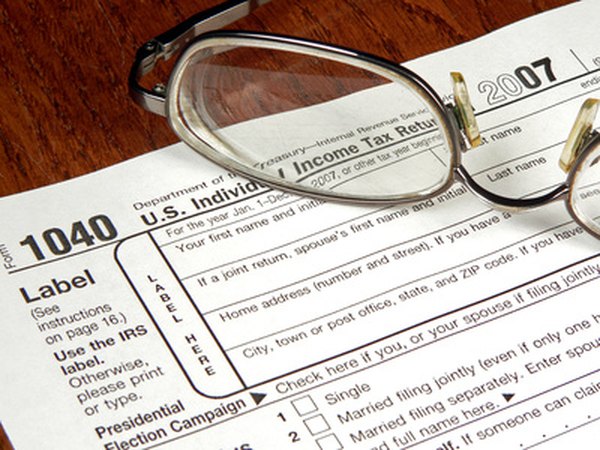Can I Withdraw Funds From My IRA for Educational Expenses?
Only higher education expenses qualify for the IRA early withdrawal penalty exception.
tax forms image by Chad McDermott from Fotolia.com
You opened your IRA accounts to save for retirement, and penalties for pre-retirement withdrawals are substantial. However, the IRS does make exceptions, and one major exception concerns the withdrawal of IRA funds to pay for certain higher education expenses. The IRS allows you to withdraw your IRA funds to pay for higher education expenses for yourself, spouse, child, stepchild, grandchild or step-grandchild without the standard 10 percent early distribution penalty kicking in if you are under 59 ½.
Tip
You can withdraw funds from your traditional or Roth IRA for qualified educational expenses without having to pay a penalty. However, you may still end up paying income tax on these withdrawals.
Traditional vs. Roth IRA
If you withdraw money from a traditional IRA for educational expenses, you will avoid the 10 percent penalty, but not the tax on the withdrawals. These are tax-deferred accounts, funded with pretax dollars, and many people can deduct their IRA contributions on their federal income tax forms. You will pay tax on the distributions at your regular income tax rate, although it is always possible that the withdrawals will put you into a higher tax bracket.
A Roth IRA account follows different rules, since it is funded with post-tax dollars and no 10 percent penalty applies for any withdrawal. As long as your account has been in existence for at least five years, you can withdraw your contributions tax-free. If you are over age 59 ½ and the account has been in existence for the five-year minimum, there is no tax on withdrawn contributions or earnings.
Qualifying Educational Expenses
Not every educational expense qualifies under IRS regulations. Tuition, administrative fees, equipment, supplies and books are considered qualified expenses at eligible institutions of higher learning. The United States Department of Education determines which such institutions are eligible, but if a college, university or vocational school participates in federal student aid programs, the school should qualify. However, it is your responsibility to verify that the school is eligible before making an IRA withdrawal. Room and board is only considered a qualifying expense for those enrolled at least half-time.
For any qualified expense, students must enroll at least half-time for eligibility, so you can’t use an IRA withdrawal to fund one or two classes per year. If you or your dependent received grants or scholarships, you must deduct that amount when determining qualified expenses. If your child’s annual tuition is $15,000, but she received a $10,000 scholarship, qualifying tuition expenses are just $5,000.
Paying student loans off after graduation is not a qualifying expense, so if you plan to fund a college education with your IRA, you must make the withdrawals during the year you or your dependent is in school. You can’t withdraw an amount above your qualifying expenses and avoid penalties. For example, if your qualifying expenses total $25,000, you can’t withdraw $30,000 without paying the 10 percent penalty on the extra $5,000.
Financial Aid and IRA Withdrawals
If you or your dependent are banking on financial aid for college, IRA withdrawals can affect the amount of financial aid eligibility for the year following the distributions, or even rule it out altogether. While you won’t have to pay the IRS penalty, distributions from traditional IRAs are considered income and counted as such when colleges determine financial aid packages.Income from Roth IRA earnings, not contributions, are also taxed as income.
If you only have to withdraw funds from your IRA to pay for one year of college, do so for the student’s senior year. That way, the withdrawals, although still counting as income for tax purposes, will not affect financial aid eligibility for the following year.
IRS Form 5329
You must report your IRA withdrawal to the IRS on your federal income tax return using Form 5329. Use code 08 on the form to report IRA distributions made for educational purposes and your exception.
References
Writer Bio
A graduate of New York University, Jane Meggitt's work has appeared in dozens of publications, including PocketSense, Financial Advisor, Sapling, nj.com and The Nest.

